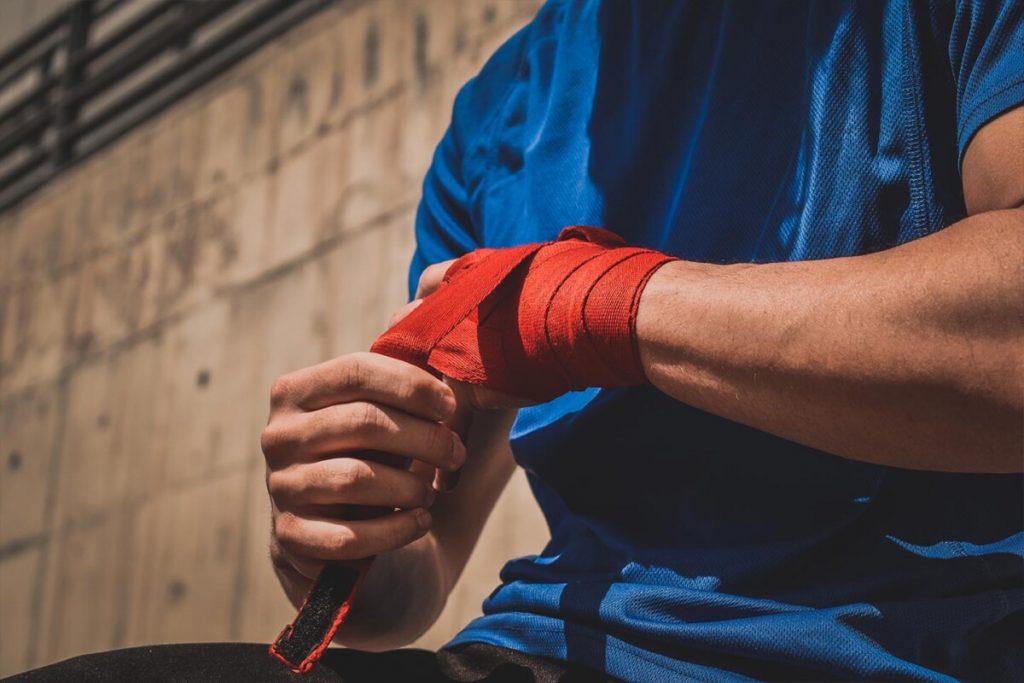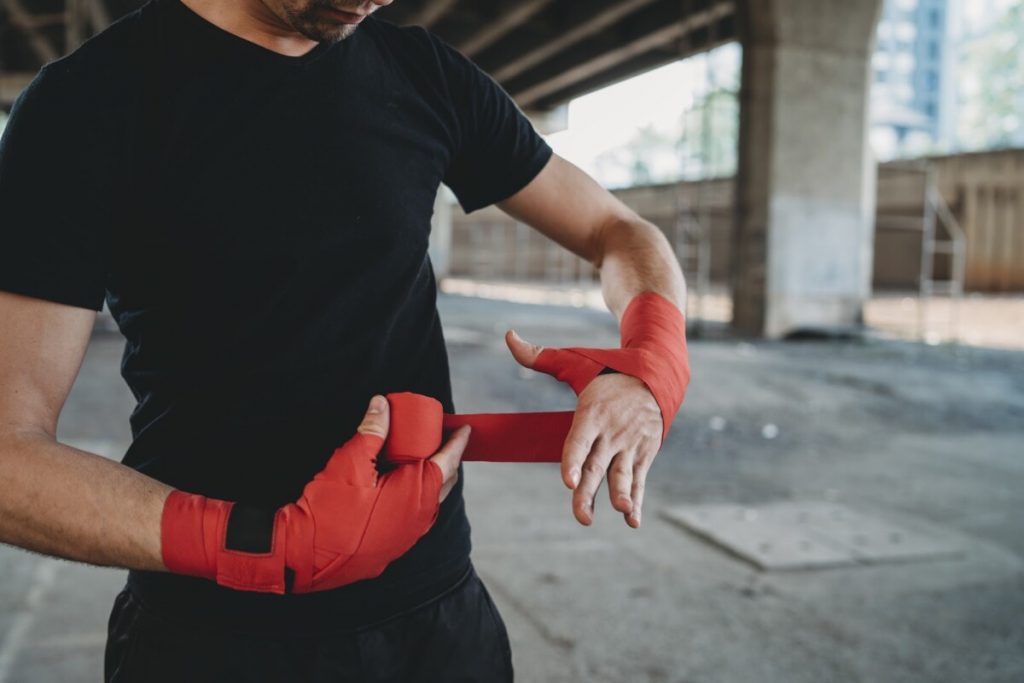Hand Trap Use: A common boxing manoeuvre used by many of the top fighters is the hand trap. By briefly stopping one of your opponent’s arms, the method restricts their options for attacking while you keep shooting. The referee will often issue a warning if you hold onto an opponent’s hand for more than a second, so try to avoid doing so unless they can’t see you.
When utilised correctly, arm traps are a powerful tool for setting up counters and upsetting your opponent’s rhythm. The nuances of the technique and how to incorporate it into your boxing repertoire will be covered in detail in this article.
Using Boxing’s Hand Trap
By temporarily controlling or immobilising your opponent’s arm, you can limit theirs and open up attacking options for yourself while executing a hand trap. Limiting an opponent’s ability to defend oneself or launch counterattacks is another benefit of trapping their arms.
When attempting an arm trap, timing is essential since certain arm traps are prohibited, such as encircling your opponent’s arm with your own during a clinch. At the amateur level, this kind of behaviour is severely frowned upon, and if you continue in this manner after being warned, you may find yourself in trouble.
Pro referees, on the other hand, are more forgiving of these methods as they are considered by many as “old school tactics” that are inherent to the sport.
An arm trap does not necessarily need you to catch your opponent’s arm in order to perform it. Simply pushing your opponent’s arm aside to prevent them from moving it in time to block your follow-up punch might also be considered an arm trap.
Generally speaking, you want to try to trap the arm from your position that the referee cannot see.
The following are some essential ideas for effectively fastening hand traps:
- Timing: Being able to trap an opponent’s arm requires both precise time and a strong sense of distance. Knowing when to set up a trap can allow you to get in a few shots before your opponent regains use of their arm.
- Hand-Eye Coordination: Fighters with excellent hand-trapping skills frequently possess remarkable hand-eye coordination. The trick is to keep a close eye on your opponent’s movements and punching patterns in order to predict their moves and set up your traps with precision.
- Control and Redirect: Getting momentary control of your opponent’s hand and opportunities for your counterattacks are the main objectives of trapping their arm. Remember this when searching for hand traps. Let’s take an example where you are trying to hit an opponent with a left hook to the jaw, but they have a high guard. By quickly moving their guard away from their jaw with your right hand, you may open a gap and launch your hook away.
- Feints: When using a technique like the hand trap, feints are essential. By using feints, you may get your opponents to respond in a way that will set them up for your hand traps.
You might also be interested in reading this: How To Get Better At Boxing Lateral Movement?
Applying the Ring’s Hand Trap Inside

Let’s examine a few applications of the arm trap in the boxing ring:
- Countering Straight Attacks: When countering straight attacks like crosses and jabs, hand traps are a very helpful weapon. For example, you can push an opponent’s arm away to break their guard and temporarily expose them to counterattacks. Parrying is the term used to describe this type of arm trap in this specific situation.
- Creating Angles: If you want to get angles on your opponents, arm traps are a great technique. To increase an arm’s susceptibility to your blows, you can trap it while you pivot or move laterally.
- To Set Up Hooks And Uppercuts: Skilled fighters know to keep their hands raised within the ring, so if you don’t have any tricks up your sleeve, hitting power punches like hooks and uppercuts on them might be difficult. To make space for your powerful punches, use arm traps to shift one of the hands protecting your opponent’s face.
- Defence: Parrying is a type of arm trap because, when done well, it causes your opponent to briefly lose control of their arm. To take advantage of the situation, attempt to land counters after parries effectively deflect blows.
Including The Hand Trap In Your Boxing Methods
You may do a few things to enhance your ability to trap arms within the boxing ring, such as:
- Shadowboxing: This is a great method to develop the dexterity and fluidity required to perform arm traps successfully. As you battle your imagined enemy, picture them defending their face or firing blows. Then, employ arm traps to create holes.
- Work with Concentration Mitts: Incorporate arm traps into your concentration mitt workouts with your trainer to receive immediate feedback and build the muscle memory required to perform arm traps on opponents.
- Sparring: To become proficient in various boxing tactics, like arm traps, realistic sparring sessions are necessary. It helps you get better at timing arm traps by letting you practise against opponents with varying techniques and tendencies.
- Reaction Drills: Set up drills that concentrate on using hand traps to respond to opponents. These exercises will help you develop the critical skills necessary for successful arm traps, including hand-eye coordination and the capacity to discern your opponent’s intentions.
- Drills for Footwork: Including footwork into your training regimen is essential since it forms the basis for all boxing techniques. A key ability needed to perform good hand traps is the ability to manipulate distances. Set aside some time to trap the arms of your opponent as you rotate or employ lateral pavement.
Errors To Avoid While Searching For Arm Traps

- Boxers who are new to arm traps should steer clear of the following mistakes:
- Avoid giving away your intention to trap your opponent’s arm since that gives them time to change their strategy.
- When throwing arm traps, don’t overcommit. Remain balanced at all times and be ready to block blows.
- When trying to trap your opponent’s arm, don’t overlook your defence. It’s possible that they want to do the same to you.
- When attempting to trap your opponent’s arm, don’t be too strict. Rather, adapt to their actions.
It’s Well Worth the Work
One boxing move that may have a significant impact on the ring is the arm trap. When you have it in your toolbox, you’ll be even more dangerous in the ring.

